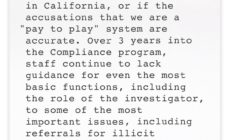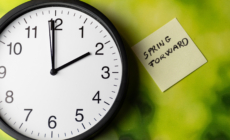-
Yankees Could Trade for Pitchers After Gerrit Cole News - 5 mins ago
-
Lakers Injury Report: Luka Doncic, LeBron James Status Revealed vs Celtics - 41 mins ago
-
Former LASD jailer pleads no contest to sex crimes against inmate - 42 mins ago
-
Trump Pulled $400 million From Columbia. Other Schools Could Be Next. - 48 mins ago
-
House Republicans Unveil Last-Minute Stopgap Funding Bill to Avert Shutdown - about 1 hour ago
-
Rage Against Elon Musk Turns Tesla Into a Target - 2 hours ago
-
What Daylight Saving Time Switch Does To Your Sleep Pattern - 2 hours ago
-
Joan Dye Gussow, Pioneer of Eating Locally, Is Dead at 96 - 2 hours ago
-
Knicks Sign Former NBA Champion Forward to Bolster Rotation - 2 hours ago
-
NASA to Launch SPHEREx and PUNCH Missions: How to Watch - 3 hours ago
Why Is It So Cold in the South If the Planet Is Warming? Here’s What We Know.
The unusual gust of frigid air extending down from the North Pole has brought the first-ever blizzard warning to southern Louisiana and grounded flights in Houston. The cold spell could blast the country with heavy snowfall from the Northeast down to the Gulf Coast this week.
What’s responsible for the sudden chill? The polar vortex. And it might be acting strangely because of climate change, though not all researchers agree.
The polar vortex is a large, whirling mass of cold air that usually extends across the Arctic. It becomes stronger in the winter, when the Northern Hemisphere leans away from the sun.
Typically, the polar jet stream, a band of strong winds encircling the globe and blowing west to east, lassoes the vortex and keeps it in the northern latitudes, regions much more used to frigid temperatures. But when the jet stream gets wobbly, the cold air can bust out and travel south.
Temperatures can fall by tens of degrees within hours and snow can hit parts of the United States like Florida and Texas known for balmier weather. Cold air can remain for days on end until the Arctic vortex stabilizes again.
On a warming planet where increasing heat is the main signature of climate change, scientists agree that we will continue to see unusually cold temperatures. A 2021 study suggested that changes in the Arctic, which is warming twice as quickly as the rest of the globe, could be stretching the polar vortex and making the jet stream more wobbly.
“Climate change has increased the disruptions to the polar vortex,” said Judah Cohen, an author of the study and an atmospheric scientist at Atmospheric Environmental Research, a consulting firm that does climate research.
While cold events in the United States have decreased overall since the 1960s, Dr. Cohen argued in a 2023 study that, since 2000, cold air outbreaks have been increasing in frequency, but not enough yet to be considered a trend.
But research like Dr. Cohen’s is ongoing.
“We just don’t see robust increases in severe cold events,” Zeke Hausfather, a climate scientist at Berkeley Earth, a research organization, said last week. “If anything, they’re decreasing.”
Total snowfall is also expected to decrease. “What we anticipate is that, as things get warmer, you can expect is a decrease in the total amount of snow over time,” Gavin Schmidt, director of the NASA Goddard Institute for Space Studies, said.
This week’s Arctic blast highlights the escalating dangers of plunging temperatures, especially in areas unaccustomed to them. Deaths related to cold weather have more than doubled in the United States over the last two decades. In 2022, more than 3,500 people died from causes linked to cold exposure, according to a study from the Centers for Disease Control and Prevention.
At least two deaths related to the cold have already been reported in Austin, Texas.




















